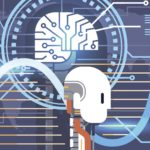Using mental models to make better decisions at work
Professional life is littered with difficult choices. Am I ready for this promotion? Which of my managers should I pick as a mentor? What should I eat at lunch? There is no foolproof method for consistently taking the best course of action —even the best of us make mistakes— but, with the right tools, it is possible to maximise the chances of success.

Human memory is an infamously unreliable mechanism, so knowing individual facts will only take you so far. A much more effective route to successful decision-making is to develop the ability to deconstruct a challenge, like ‘why isn’t the printer working?’, so that it can be analysed from different perspectives. If you can transform your mind into a lean deductive machine, you can make each big call of your career assured that the conclusion you reach is not the result of individual bias, but the product of pure reason.
This is where mental models come in. Each model is a tool your mind can use to analyse and understand the world around you. When many of these models work in tandem, they form a toolbox for great decision-making. The most important thing to remember about mental models? The more you have, the better you will be able to solve the problem at hand. On its default setting, the brain works against rational reasoning; it leans on models it already knows and tries to force them into every situation. To the man with a hammer, everything looks like a nail.
By increasing the models in your cognitive range, you decrease the chances of your brain getting caught out. To start you off on your journey to world-class cognition, here are four examples of mental models, from four different fields, that you can start using right now to improve the decisions you make at work.
Crowdsourcing
Crowdsourcing has been around for a lot longer than most people think. In 1714, at a time when the internet would probably have been feared as some form of powerful black magic, the British government crowdsourced the answer to the Longitude Problem, which had been a continuous thorn in the side of ships making transoceanic voyages. And what were the iconic wanted posters of the American Wild West but a crude method of crowdsourcing criminal justice?
What the internet did do (and especially web 2.0 technologies) was provide for the first time a truly effective platform for crowdsourcing. We can now obtain everything from services to ideas to content with minimal effort and utilise systems that organise mass amounts of data in the blink of an eye. This is a very powerful combination. At BBVA we use crowdsourcing to test and improve the products we make – our own employees play a pivotal role too, testing beta versions and providing feedback.
The big benefit of crowdsourcing is it harnesses the wisdom of the crowd. A large group’s aggregated wisdom is much smarter than a single individual’s – by crowdsourcing the answer to your problem, you are much more likely to arrive at the correct decision.
Pareto Efficiency
Politicians spend most of their careers looking for Pareto improvements. How can they improve Citizen A’s chances in life without disadvantaging or diverting resources from Citizen B?
We reach a state of ‘Pareto Efficiency’ when all Pareto improvements have been made and it becomes impossible to make any one individual better off without making at least one individual worse off. It’s not difficult to see how this can be applied to good decision-making. It equips the thinker with an understanding that they are working with finite resources – and that their job is to find the most productive arrangement of those resources.
Imagine you want to take a different route to successful decision-making and decide to build a robot that will use an advanced A.I. to make all of your decisions for you. You have good quality materials to build with, but you can’t get any more. Rather than complaining that more materials are required, you could use the principle of Pareto Efficiency to find the best combination of the ones you have to hand. Of course, you’d need the technical knowledge of a machine learning genius, too!

Taking decisions for the future man standing with many direction arrow choices, left, right or move forward
Observer Effect
Not all things can be observed and preserved simultaneously. Often, like when checking the pressure of a car tire, we affect the state of a thing, simply by trying to observe it. In the case of the tire, it’s pretty much impossible to gauge the pressure without letting a little air out – your measurement will therefore be affected. This is annoying – how can you measure the property of a thing if your measurement changes the property?
There is a psychological equivalent too; the Hawthorne Effect, which can happen when a person is aware they are being observed i.e. people in TV documentaries altering their behavior because they want to look good in front of the camera. These may seem inconsequential examples. But the Observer Effect has serious implications for your decision-making process.
Imagine you’re a study leader gathering market research about a service your business provides. But you’re also a funny, charismatic individual – and one of the research participants take a personal liking to you. Because they like your personality, and they are aware you’re recording their results, they might just tell you what they think you want to hear from them (this service is amazing, bravo!) rather than what they really think (this is terrible, I’d never buy it). If you want to make informed decisions based on accurate data, you have to consider how the Observer Effect might have compromised the information you have to hand.
Filter Bubble
Filter bubbles sound nice. But they are basically constraints in the mind; they lock your thinking into one particular mode and suppress relevant information from entering your decision-making process. They can occur when an algorithm like Google’s search function selectively guesses the kind of information you would like to see based on things like your location, past click behavior, or search history. When this process is repeated over time, you can become separated from information that disagrees with your viewpoints, and isolate yourself in a cultural or ideological ‘bubble’.
This can have disastrous consequences; echo chambers of bad decision-making. But by becoming aware of filter bubbles, you can fight back and broaden the horizons of your mind. The 136,000 people who work at BBVA, for example, are comprised of endless combinations of cultural, national, ethnic and sexual orientation, and we do everything we can to preserve and stimulate this powerful diversity. By working alongside lots of different people who are interested in lots of different things, our employees are able to form cosmopolitan understandings and, ultimately, make better decisions.
They also employ more mental models than can be listed here. If you want more, this Medium list is a great place to start. If you’d like to learn more about life and career opportunities at BBVA, please visit BBVA Careers and follow us on LinkedIn.